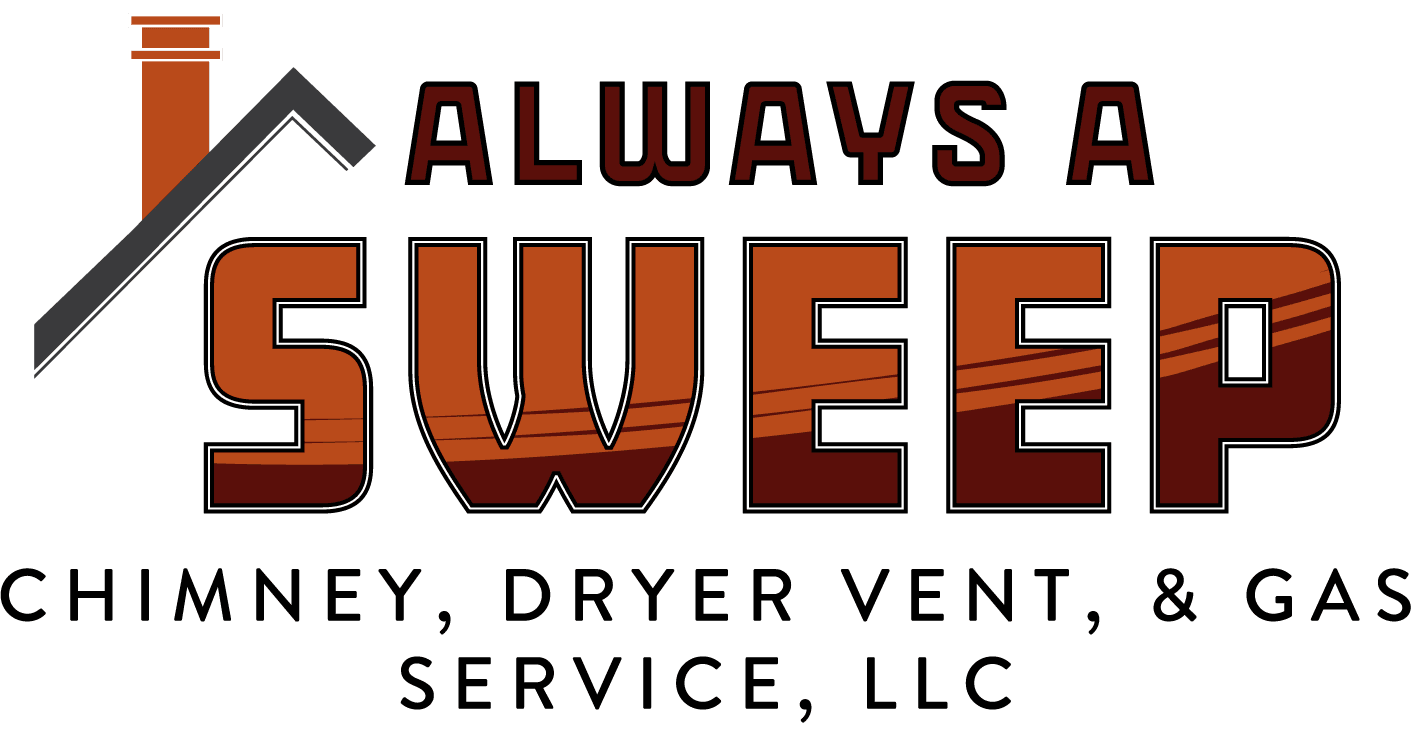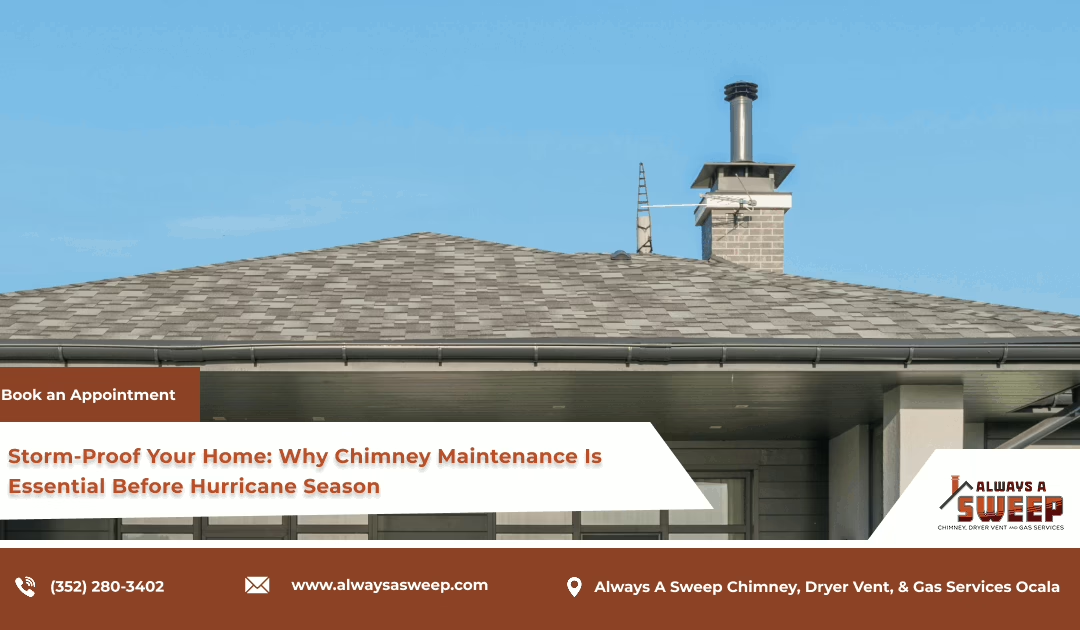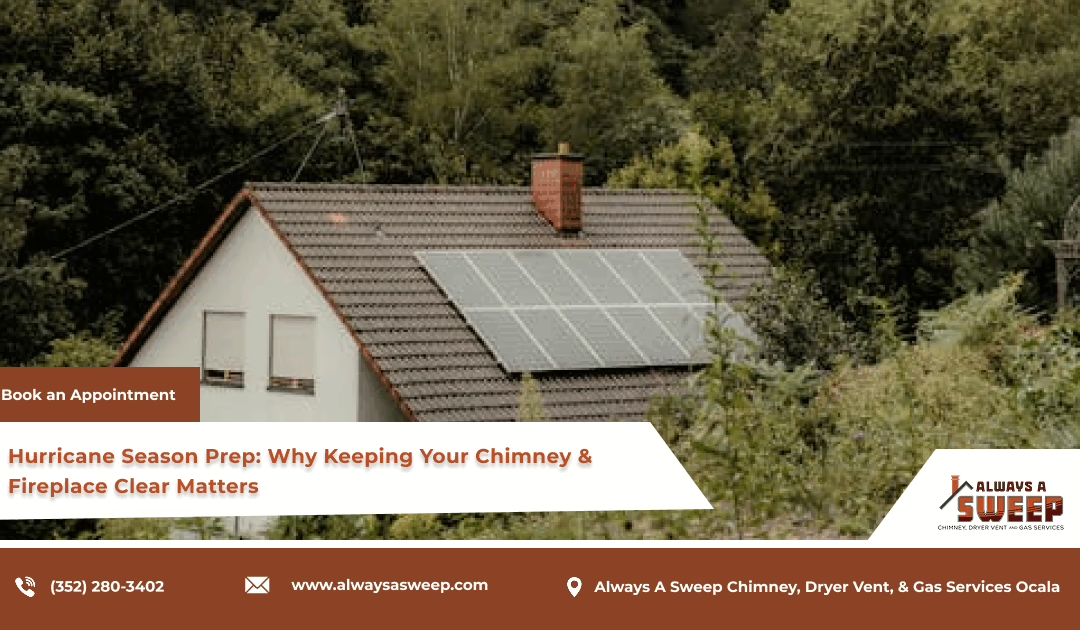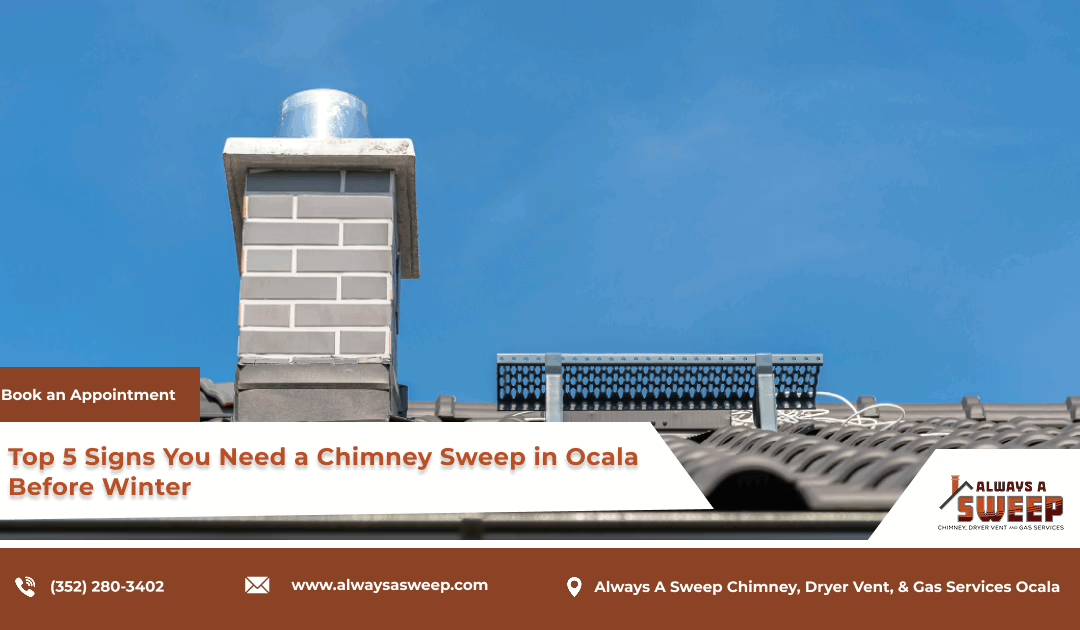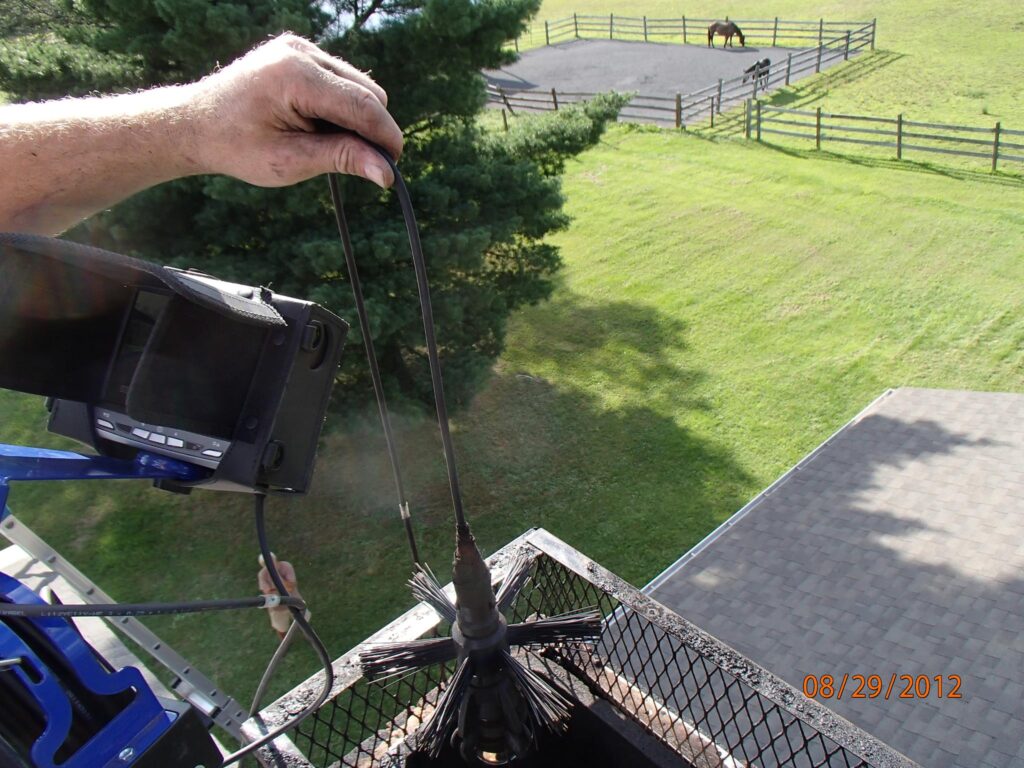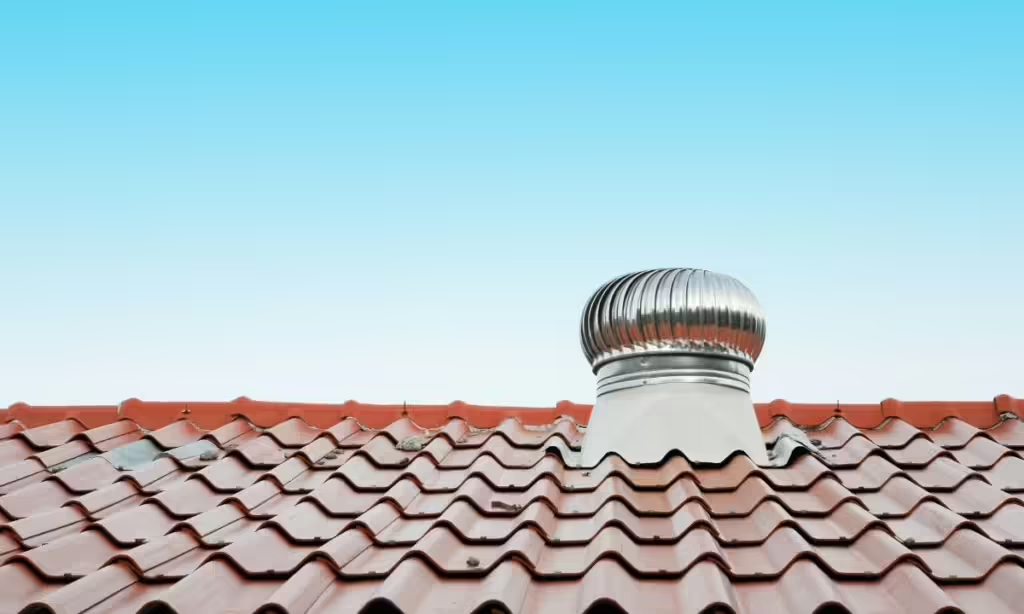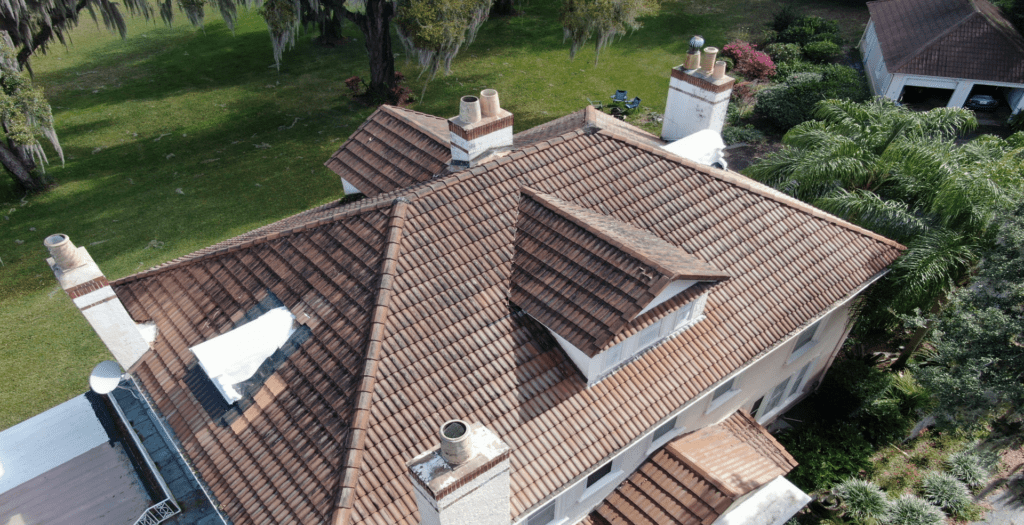Introduction: Your Chimney's Greatest Threat in Florida A professional water intrusion assessment is one of the most vital yet misunderstood services for any homeowner with a chimney, especially here in Central Florida. While fire is the hazard most people associate...
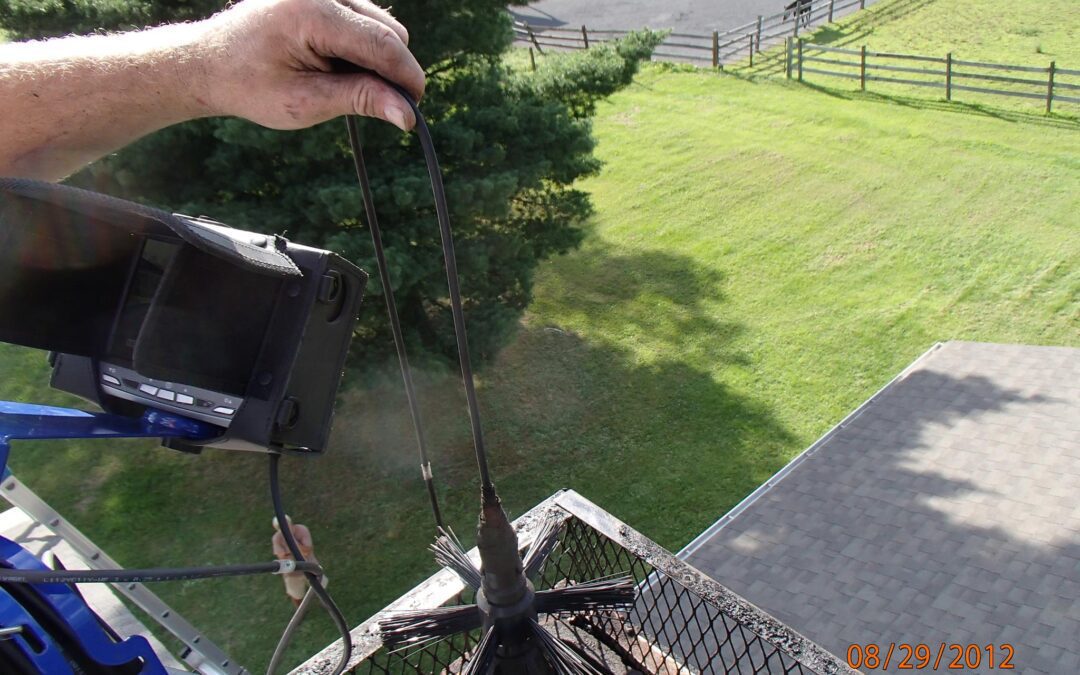
The Chimney Expert’s Blog: A Guide to Professional Water Intrusion Assessment
Introduction: Your Chimney’s Greatest Threat in Florida
A professional water intrusion assessmentis one of the most vital yet misunderstood services for any homeowner with a chimney, especially here in Central Florida. While fire is the hazard most people associate with chimneys, water is a far more common, silent, and relentless threat. The intense sun, heavy rains, and high humidity of our climate create a perfect storm for water to penetrate your chimney’s defenses, leading to slow but catastrophic structural decay.
As CSIA Certified Chimney Sweeps with decades of experience serving Ocala, Gainesville, and the surrounding communities, we at Always A Sweep have seen firsthand how a small, unnoticed leak can lead to thousands of dollars in damage. Our expertise is rooted in the science of venting systems and the stringent safety codes of the National Fire Protection Association (NFPA), which govern not only fire safety but the structural integrity of your entire chimney system. This guide is designed to give you an expert’s perspective on what a comprehensive water intrusion assessment entails and why it is an essential part of protecting the safety, efficiency, and value of your home.
Understanding the Enemy: How Water Silently Destroys Your Chimney
A masonry chimney may look solid and impenetrable, but it is actually a porous structure that is highly susceptible to water damage. When water penetrates the brick and mortar, it initiates a destructive cycle that compromises the entire system from the inside out.
- Masonry Degradation (Spalling):Bricks and mortar act like sponges, absorbing rainwater. As this moisture saturates the masonry, it can cause the face of the bricks to pop off or flake away—a process known as spalling. This weakens the structure and creates larger openings for even more water to enter.
- Mortar Joint Deterioration:The mortar holding your chimney’s bricks together is the system’s first line of defense. Constant exposure to rain and moisture dissolves the mortar over time, creating gaps and cracks that allow water to seep deep into the chimney’s core.
- Rust and Corrosion:Many critical chimney components are made of metal, including the damper, chase cover, and flashing. Water intrusion leads to rust and corrosion, causing these parts to fail. A rusted damper can seize up, while a corroded chase cover or flashing can create a direct pathway for water to enter your attic and home.
- Hidden Mold and Mildew:When water seeps into the chimney and surrounding walls, it creates a dark, damp environment—the perfect breeding ground for mold and mildew. This not only causes unpleasant odors but can also pose a significant health risk to your family by degrading your home’s indoor air quality.
The Anatomy of a Professional Water Intrusion Assessment
A true water intrusion assessmentgoes far beyond a quick glance from the ground. It is a systematic, top-to-bottom evaluation based on the principles of a Level II chimney inspection, as defined by the NFPA 211 standard. This is the standard required when a property is being sold or after an event that may have caused damage—and it is the standard we believe every homeowner deserves.
Step 1: The Rooftop Inspection – Identifying the Entry Points
Our assessment begins at the source. A certified technician will safely access your roof to perform a detailed, hands-on inspection of the chimney’s most vulnerable components:
- The Chimney Crown:This concrete slab at the top of your chimney is meant to shed water away from the flue. We look for cracks, chips, or deterioration that could allow water to seep into the masonry below.
- The Chimney Cap:A missing or damaged chimney cap is an open invitation for rain, debris, and animals to enter your flue directly. We ensure it is securely in place and properly sized.
- The Flashing:This sheet metal seal between the chimney and the roof is a common failure point. We inspect for rusted sections, gaps, or improper installation that could be channeling water directly into your attic or ceiling.
- The Masonry and Mortar:We examine every brick and mortar joint for signs of spalling, cracking, or erosion, identifying areas that may require Masonry Repair or tuckpointing.
Step 2: The Internal Flue Examination – A Look Inside
What happens inside the chimney is just as important. Water that penetrates the flue can damage the liner, which is the critical component that contains the heat and byproducts of a fire. As part of a comprehensive water intrusion assessment, we use high-definition video scanning equipment to inspect the entire length of the flue liner from the inside. This allows us to identify:
- Cracked Flue Tiles:Water damage can cause clay flue tiles to crack or break apart, creating a pathway for fire and carbon monoxide to escape into your home.
- Deteriorating Mortar Joints:The small mortar joints between flue tiles can erode due to moisture, compromising the liner’s integrity.
- Blockages and Debris:A damaged cap can allow leaves, nests, and other debris to fall into the flue, creating a fire hazard and trapping moisture.
Step 3: The Interior Inspection – Tracing the Damage
Finally, we inspect the interior of your home for signs that water has already made its way inside. This includes checking the attic, ceilings, and walls around the fireplace for:
- Water stains or discoloration.
- Peeling paint or wallpaper.
- A damp or musty smell.
- Rusted components in the firebox, such as the damper or grate.
Beyond the Bricks: The Ripple Effect of a Leaky Chimney
The damage from a chimney leak rarely stays confined to the chimney itself. A proper water intrusion assessmentis crucial because it helps prevent a chain reaction of damage that can affect your entire home.
- Attic and Roof Damage:Water that bypasses the flashing can lead to wood rot in your roof decking, rafters, and ceiling joists, compromising the structural integrity of your home.
- Damaged Ceilings and Walls:The most visible signs of a chimney leak are often the brown or yellow stains that appear on the ceilings and walls adjacent to the fireplace. By the time you see these stains, the damage behind the drywall is often extensive.
- Compromised Fireplace and Chimney Function:A water-damaged chimney is an unsafe chimney. Rust can prevent the damper from closing properly, leading to energy loss, while a damaged flue liner can turn a simple fire into a house fire.
The Always A Sweep Standard: From Water Intrusion Assessment to Lasting Repair
Identifying the problem is only half the battle. As a full-service chimney company, our expertise doesn’t end with the assessment. We are equipped to provide lasting, code-compliant solutions for any issue we uncover. This commitment to seeing the job through from start to finish is a core part of our company’s values of Safety, Efficiency, and Enjoyment.
Our repair services include:
- Leaky Chimney Repair: A comprehensive approach to stopping leaks at their source.
- Chimney Cap and Chase Cover Installation: Installing high-quality, durable components to provide the ultimate protection.
- Flashing Repair and Replacement: Creating a new, watertight seal between your chimney and roof.
- Waterproofing and Masonry Repair: Repairing damaged masonry and applying professional-grade water repellent to prevent future absorption.
A Homeowner’s Guide to Spotting Early Warning Signs
You can be the first line of defense. If you notice any of the following signs, it is time to schedule a professional water intrusion assessment.
| Location | Warning Sign | Potential Problem |
| On the Roof | Cracked concrete top; missing or rusted cap. | Failing Chimney Crown or Cap |
| Exterior Chimney | White staining (efflorescence); crumbling brick or mortar. | Saturated Masonry |
| In the Attic | Damp insulation; water stains on the wood around the chimney. | Leaking Flashing |
| Inside the Home | Stained ceiling or walls; musty smell; water dripping in the firebox. | Advanced Internal Leak |
Frequently Asked Questions (FAQs) About Chimney Water Intrusion
How often should I have a water intrusion assessment?The Chimney Safety Institute of America (CSIA) and the NFPA recommend an annual chimney inspection. In Florida, given our severe weather, an annual water intrusion assessmentis a wise investment to catch problems before they escalate.
I see a small water stain on the ceiling near my fireplace. Is it a big deal?Yes. A water stain is visible evidence that water has already penetrated multiple layers of your home’s defenses (roofing, decking, drywall). The damage you can’t see is almost always more extensive than the stain you can. It requires immediate professional attention.
Can I just use a sealant from a hardware store to fix a crack in my chimney crown? DIY sealants are temporary patches at best. They do not address the underlying cause of the crack and often trap moisture inside the masonry, which can accelerate deterioration. A professional repair involves using specialized, breathable materials that are designed for the high-temperature, high-exposure environment of a chimney.
What is the difference between a roofer and a certified chimney sweep for fixing a leak? While a roofer is an expert on your roof, a CSIA Certified Chimney Sweep is an expert on the entire chimney system. A leak may appear to be a flashing issue (a roofer’s domain), but it could originate from a cracked crown or porous masonry, which requires a chimney specialist’s expertise to diagnose and repair correctly. We understand how all the components work together as an integrated system.
Conclusion: Protect Your Home with Proactive Expertise
Your chimney is a complex system that requires specialized knowledge to maintain. In Florida’s challenging climate, a proactive water intrusion assessmentis not a luxury—it is an essential part of responsible homeownership. By identifying and addressing water penetration early, you can prevent devastating structural damage, avoid costly repairs, and ensure your fireplace remains a safe and enjoyable feature of your home for years to come.
Don’t wait for a small leak to become a major disaster. If you live in the Ocala, Gainesville, or Fort Pierce areas, trust the certified experts who understand the unique challenges of our region. Contact Always A Sweep today to schedule your comprehensive water intrusion assessmentand protect your most valuable investment.
